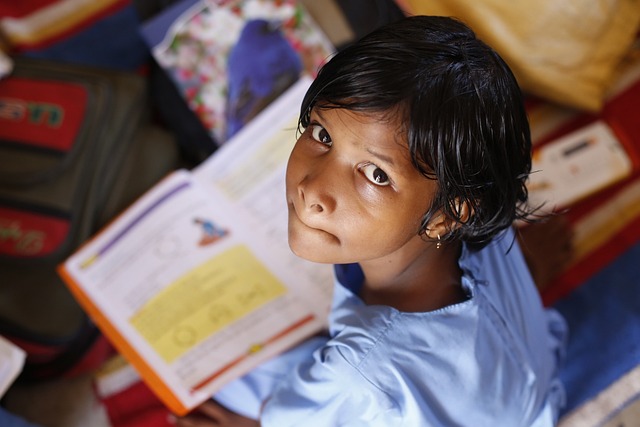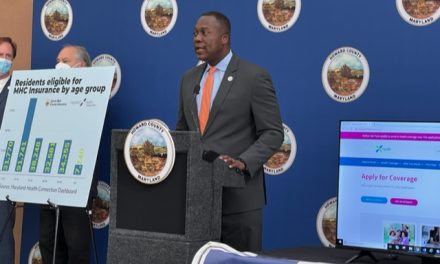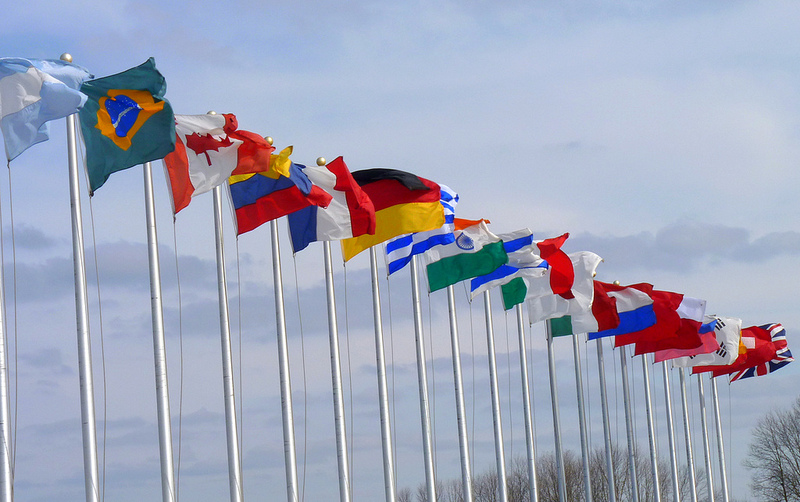By CHRISTINA WALKER
A “boring and pointless” education.
That’s what students at Henry E. Lackey High School in Indian Head, in Charles County, tell their English teacher Nicholas Gray they’re receiving while they distract themselves with TikTok videos, “snaps” on Snapchat, and endless scrolls through Instagram during class.
“It is difficult to convince [students] that learning is more impactful and important than the brand new video that will entertain them,” Gray said
With that thought in mind, Charles County this month joined nine other Maryland school districts in a lawsuit against the world’s social media giants: Google, Meta, ByteDance and Snap Inc. Other school districts in the state that have joined the court action are Anne Arundel, Baltimore City, Carroll, Cecil, Harford, Howard, Montgomery, Prince George’s and Talbot.
“Hopefully this lawsuit provides pressure for some action in terms of how to better create products that are geared to children,” said Maria Navarro, superintendent of Charles County Public Schools.
A classroom distraction
The lawsuit accused several social media platforms of targeting and manipulating youth so they stay engaged for excessive amounts of time – and that’s exactly what educators see in Charles County classrooms.
“(Social media is) a huge distraction in our schools and in our classrooms,” said Cheryl Davis, principal of Henry E. Lackey High School.
The teachers do their part to plan effective, instructional uses for technology in the classroom, Davis said, but personal devices get in the way.
Gray said he prohibits the use of cell phones during instructional times and tries to create engaging lessons so that students will not be tempted to use their devices or go on social media. However, he said, the biggest problem plaguing his students is self-control and their failure to regulate personal behavior.
“Students are lacking the ability to express their emotions in a positive way,” Davis said. “We see a lot more negative expressions.”
Students have gotten more angry and aggressive, Davis said. In a developmental part of their lives, they often fail to pause for a moment and look for resources or constructive ways to express their emotions.
“There is no respite,” Gray said. “Students leave for the day and the talking/anger continues onto Instagram or Snapchat, and then the students come to school upset over what is on social media.”
Several Charles County educators said more physical altercations have occurred because of social media conflicts.
“Snapchat scares me,” said Brian Street, a father of two Piccowaxen middle schoolers. “I’ve seen several fights at school on Snapchat.”
On top of that, two staff members at St. Charles High School were injured Thursday after they intervened in a physical altercation between students that started over a social media post, according to a letter that Principal Tammika Little sent out to parents.
“Please monitor your child’s electronic devices and social media accounts,” Little said.
The mental health impact
Not surprisingly, school officials in Charles County and elsewhere are alarmed at how social media affects child development and mental health. That concern is also reflected in the lawsuit, which alleges that companies are aware of the negative impacts the platforms have on children’s mental health, but they choose to prioritize profit.
Students go through developmental changes from elementary school to middle school, where their focus shifts from their parents to their peer group. Navarro said this is when children start pushing their own boundaries and understanding how to become an adult.
As students become more self-sufficient, they begin building confidence – but social media usage during this stage can interrupt a child’s growth, Navarro said.
“A fake reality, at those pivotal developmental ages, has more of an impact on behavioral health,” Navarro said. “It also isolates you.”
Navarro said social media augments the insecurities children face at pivotal ages, and research seems to prove that point. Researchers at Facebook found that Instagram, in 2021, made one in three girls feel worse about their bodies, according to the Wall Street Journal.
Moreover, the COVID-19 pandemic further isolated children and left many in a more fragile mental state. According to the Centers for Disease Control, in 2021, suicide was the second leading cause of death for people ages 10 to 14.
Charles County educators said social media contributes to the mental health crises that some young people endure. Inappropriate social media interactions continue to create disruptions in the buildings all over the county because children these ages are not developmentally ready for the responsibility, Davis said.
“Students lack the maturity to be able to handle social media,” Davis said.
That being the case, Davis said schools must make mental health a priority or else their true purpose will not be achieved.
“We are here to educate students,” Davis said. “If students are not in the right mindset, then it’s much more difficult for them to access education.”
Searching for solutions
While voicing support for the lawsuit, Charles County educators are looking elsewhere for more prompt solutions to the problems social media causes in the classroom.
Davis pushed for parents to be a part of the solution.
“You pay for the phone, you own the phone, put some apps on there that allow you to control access,” Davis said.
Parents should be monitoring their kids’ devices to make sure they’re safe, Davis said, and it is not just her who feels this way.
“It’s not a school thing, it’s a parent thing,” Street said.
He said that while he does monitor his kids’ social media usage, it is a parents’ decision on how active they want to be in controlling it.
Navarro said CCPS has many resources for parents to learn how to be tech savvy so they know how to keep their children safe. In addition to limiting screen time, she said parents should be encouraging their kids to physically play, talk and participate in sports and extracurricular activities with other kids.
Navarro said when children should be allowed to have devices is a parent’s choice.
“My job is to inform and educate them about the implications of those decisions,” Navarro said. She said she wants students to reach their full potential, but right now social media makes it harder for them to do that.
That’s where the lawsuit could help.
Navarro said that if the district gets any compensation from this lawsuit, the school system intends to expand resources for the growing needs of behavioral health.
And even in these early stages, Navarro said, the lawsuit serves an important purpose.
“It sends a message,” she said.
The message: that everyone – from social media companies to educators to parents to students – must be alert to the harm that social media can do to young people.







Recent Comments